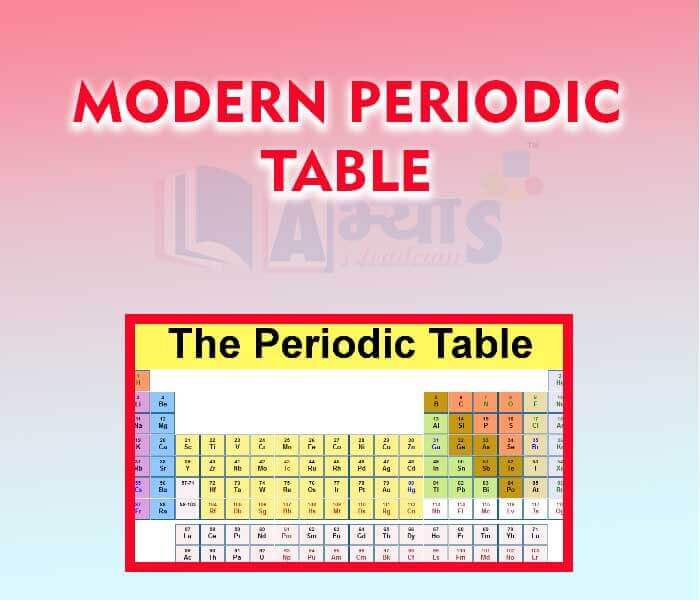Modern Periodic Table







Modern Periodic Table
Modern periodic table: In 1913, Henry Moseley showed that the atomic number of an element is a more fundamental property and on the basis of this, he modified Mendeleev’s periodic law as “physical and chemical properties of the elements are a periodic function of their atomic number”. This is called modern periodic law. When the elements were arranged in the increasing order of the atomic number, the obtained table is called modern periodic law.
Features of Modern Periodic Table:
This table has 18 vertical columns, known as groups and 7 horizontal rows, known as periods.
Features of Groups:
Features of Periods:
Which of the following are correct : (a) In Modern Periodic Table groups are not divided into sub-groups. (b) In Modern Periodic Table elements present in a group have the same number of valence or similar electrons. (c) In Modern Periodic Table elements present in a group have the same valency. | |||
| Right Option : D | |||
| View Explanation | |||
Which of the following are correct : (a) Elements of a period do not have the same number of valence electrons but they contain the same number of shells. (b) In 1913, Henry Moseley showed that the atomic number of an element is a more fundamental property. (c) As the number of valence shell electrons changes, the chemical properties of the elements also change. | |||
| Right Option : D | |||
| View Explanation | |||
Students / Parents Reviews [10]
A marvelous experience with Abhyas. I am glad to share that my ward has achieved more than enough at the Ambala ABHYAS centre. Years have passed on and more and more he has gained. May the centre flourish and develop day by day by the grace of God.

Archit Segal
7thMy experience was very good with Abhyas academy. I am studying here from 6th class and I am satisfied by its results in my life. I improved a lot here ahead of school syllabus.

Ayan Ghosh
8thMy experience with Abhyas academy is very good. I did not think that my every subject coming here will be so strong. The main thing is that the online tests had made me learn here more things.

Hiya Gupta
8thAbhyas is a complete education Institute. Here extreme care is taken by teacher with the help of regular exam. Extra classes also conducted by the institute, if the student is weak.

Om Umang
10thMy experience with Abhyas is very good. I have learnt many things here like vedic maths and reasoning also. Teachers here first take our doubts and then there are assignments to verify our weak points.

Shivam Rana
7thOne of the best institutes to develope a child interest in studies.Provides SST and English knowledge also unlike other institutes. Teachers are co operative and friendly online tests andPPT develope practical knowledge also.

Aman Kumar Shrivastava
10thAbhyas Methodology is very good. It is based on according to student and each child manages accordingly to its properly. Methodology has improved the abilities of students to shine them in future.

Manish Kumar
10thBeing a parent, I saw my daughter improvement in her studies by seeing a good result in all day to day compititive exam TMO, NSO, IEO etc and as well as studies. I have got a fruitful result from my daughter.

Prisha Gupta
8thAbout Abhyas metholodology the teachers are very nice and hardworking toward students.The Centre Head Mrs Anu Sethi is also a brilliant teacher.Abhyas has taught me how to overcome problems and has always taken my doubts and suppoeted me.

Shreya Shrivastava
8thIt was good as the experience because as we had come here we had been improved in a such envirnment created here.Extra is taught which is beneficial for future.
